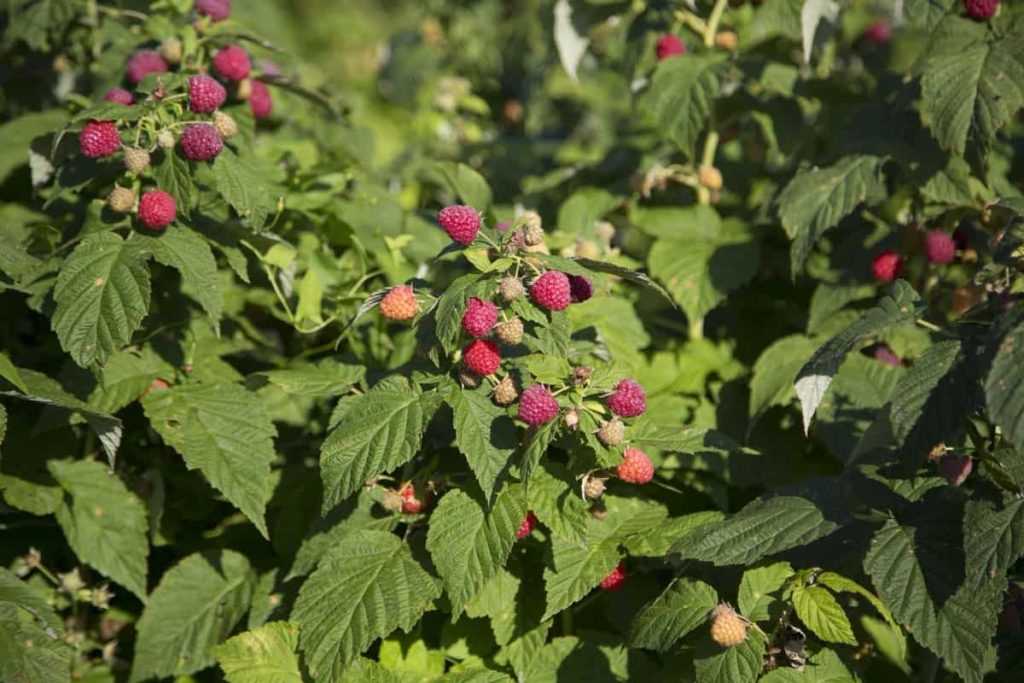- Benefits of Proper Trench Preparation
- 1. Improved Drainage
- 2. Enhanced Nutrient Availability
- 3. Weed Suppression
- 4. Increased Soil Warmth
- 5. Prevention of Soil Erosion
- Choosing the Right Location
- Soil and Sun Requirements
- Soil Preparation
- Sun Requirements
- Distance and Spacing
- Soil Drainage
- Fertilizer Needs
- Moisture Requirements
- Consider the Size
- Preparing the Trench
- 1. Choose the right location
- 2. Measure and mark the trench
- 3. Dig the trench
- 4. Remove weeds and debris
- 5. Improve the soil
- 6. Install a support system
- 7. Plant the raspberries
- 8. Mulch the bed
- 9. Water thoroughly
- 10. Monitor and maintain
- Measuring and Marking
- Removing Grass and Weeds
- Methods for removing grass and weeds
- Tips for removing grass and weeds effectively
- Loosening the Soil
- Adding Amendments
- Organic Matter
- Mineral Amendments
- Fertilizers
- Mixing and Watering
- Compost and Organic Matter
- Question-answer:
- What is the proper depth for a trench when planting raspberries?
- Should the soil be prepared before digging the trench?
- How wide should the trench be?
- What should be added to the soil in the trench before planting raspberries?
- Can raspberries be planted in heavy clay soil?
- How far apart should the raspberry plants be spaced?
- Video: How I propagate raspberry plants | Get More Plants For Free |
Growing raspberries can be a rewarding and fruitful endeavor, but it requires proper preparation and maintenance. One important aspect of successfully cultivating raspberries is preparing the trench for planting. The trench serves as the foundation for the raspberry plants, providing them with the necessary nutrients and drainage for optimal growth and fruiting.
When preparing the trench for planting raspberries, it is essential to choose a suitable location. Raspberries require full sun exposure for at least 6-8 hours per day, so it is important to select a spot that receives ample sunlight. Additionally, the soil should be well-draining to prevent waterlogging, as raspberries prefer moist but not waterlogged conditions.
Once you have selected a suitable location, you can begin preparing the trench. Start by digging a trench that is approximately 12-18 inches deep and 12-18 inches wide. This size provides enough space for the raspberry plants to establish and spread their roots. It is also important to remove any weeds or grass from the trench to prevent competition for nutrients and water.
After digging the trench, it is recommended to amend the soil with organic matter such as compost or well-rotted manure. This will help improve the soil structure, drainage, and nutrient content. Spread a layer of organic matter along the bottom of the trench and mix it into the soil using a garden fork or a shovel. This will ensure that the raspberry plants have access to the necessary nutrients for healthy growth.
Benefits of Proper Trench Preparation
Proper preparation of the trench before planting raspberries can have several benefits. These benefits include:
1. Improved Drainage
By preparing the trench properly, you can ensure that the soil drains well. Raspberries need well-drained soil to prevent waterlogging, which can lead to root rot and fungal diseases. A well-prepared trench with proper soil amendments such as sand or gravel can help improve drainage and prevent waterlogging.
2. Enhanced Nutrient Availability
Preparing the trench allows you to incorporate organic matter and fertilizers into the soil, providing essential nutrients for the raspberry plants. This can help promote healthy growth and abundant fruiting. By properly preparing the trench, you can ensure that the nutrients are evenly distributed and readily available to the plants.
3. Weed Suppression
By digging a trench and removing the existing vegetation, you can effectively suppress weeds. Weeds compete with raspberry plants for nutrients, water, and sunlight, which can hinder their growth and productivity. Proper trench preparation helps create a weed-free zone around the raspberry plants, reducing the need for frequent weeding and minimizing competition.
4. Increased Soil Warmth
By digging a trench and filling it with well-draining, loose soil, the temperature of the soil can be increased. Raspberries prefer warm soil for optimal growth and fruit production. A properly prepared trench can help create a warmer microclimate for the raspberry plants, especially early in the growing season when temperatures may still be cool.
5. Prevention of Soil Erosion
Proper trench preparation can also help prevent soil erosion. By creating a trench and incorporating organic matter and mulch, you can help stabilize the soil and prevent it from washing away during heavy rainfall. This helps protect the root system of the raspberry plants and maintains the integrity of the planting area.
| Benefit | Description |
|---|---|
| Improved Drainage | Prevents waterlogging and root rot |
| Enhanced Nutrient Availability | Provides essential nutrients for plant growth |
| Weed Suppression | Reduces competition from weeds |
| Increased Soil Warmth | Creates a warmer microclimate for plants |
| Prevention of Soil Erosion | Stabilizes soil and protects roots |
Choosing the Right Location
When preparing a trench for planting raspberries, it is important to choose the right location. Raspberries thrive in a sunny spot with well-draining soil. Here are some factors to consider when selecting the location:
- Sunlight: Raspberries require at least 6-8 hours of direct sunlight daily to produce abundant fruit. Choose a location that receives full sun throughout the day for optimal growth and fruiting.
- Soil Drainage: Raspberries prefer soil that is well-draining to avoid waterlogged conditions, which can lead to root rot. Choose a location with soil that drains well to ensure the plants do not sit in standing water.
- Soil pH: Raspberries prefer slightly acidic to neutral soil with a pH level between 5.5 and 7.0. Test the soil pH of the chosen location and amend it if necessary to create the ideal pH level for raspberries.
- Wind Protection: Raspberries are susceptible to wind damage, so it is beneficial to choose a location that provides some protection from strong winds. Planting them near a fence, wall, or other windbreak can help reduce wind damage.
- Slope: It is best to avoid planting raspberries on a slope to prevent erosion and water runoff. If the chosen location has a slight slope, consider creating terraces or using mulch to prevent soil erosion and retain moisture.
By carefully considering these factors and selecting a suitable location for your raspberry plants, you can ensure optimal growing conditions and increase the chances of abundant and long fruiting.
Soil and Sun Requirements
Raspberries thrive in well-drained soil that is rich in organic matter. It is important to prepare the soil before planting the raspberries to ensure optimal growth and fruit production.
Soil Preparation
- Test the soil pH: Raspberries prefer slightly acidic to neutral soil with a pH range of 5.5 to 7.0. Test the soil pH using a soil testing kit and make necessary adjustments if needed.
- Remove weeds and grass: Clear the area of any weeds or grass that may compete with the raspberries for nutrients and water.
- Till the soil: Use a garden tiller or a shovel to loosen the soil to a depth of about 8 to 10 inches. This will improve soil aeration, drainage, and root penetration.
- Add organic matter: Incorporate well-rotted compost or aged manure into the soil to improve its fertility and moisture-retaining capacity. Spread a layer of organic matter and mix it thoroughly with the soil.
Sun Requirements

Raspberries require full sun to produce abundant and flavorful fruits. Choose a planting location that receives at least 6 to 8 hours of direct sunlight per day. Lack of sunlight can result in weak growth and poor fruiting.
Distance and Spacing
When planting raspberries, ensure to leave enough space between plants to allow for air circulation and easy maintenance. Space the plants about 2 to 3 feet apart within rows, and leave 6 to 8 feet between rows. This will provide ample room for the raspberries to grow and spread.
Soil Drainage
Good soil drainage is crucial for the health and productivity of raspberry plants. Avoid planting them in areas with poor drainage, as excessive moisture can lead to root rot and other diseases. If the soil tends to be heavy, consider adding organic matter or creating raised beds to improve drainage.
Fertilizer Needs
Raspberries benefit from regular fertilization to ensure optimal growth and fruiting. Before planting, incorporate a balanced fertilizer into the soil according to the package instructions. Additionally, apply a nitrogen-rich fertilizer in early spring and repeat the application every 4 to 6 weeks during the growing season.
Moisture Requirements

Raspberries require adequate moisture to thrive, especially during the fruiting season. Supply them with about 1 to 1.5 inches of water per week, either through rainfall or irrigation. Keep the soil evenly moist but not waterlogged to prevent root problems.
Consider the Size
When preparing the trench for planting raspberries, it is important to consider the size of the trench. The size of the trench will depend on several factors, including the number of raspberry plants you plan to grow and the spacing requirements for your particular variety.
First, determine the number of raspberry plants you want to grow. This will help you decide how long the trench should be. As a general rule, each raspberry plant should be spaced about 2-3 feet apart. If you are planting multiple rows of raspberries, leave about 4-5 feet between each row to allow for easy access and maintenance.
Next, consider the depth of the trench. The trench should be deep enough to accommodate the roots of the raspberry plants without crowding or bending them. A depth of 8-10 inches is usually sufficient.
It is also important to prepare the width of the trench. The width should be wide enough to allow for proper root development and airflow, but narrow enough to prevent excessive water runoff. A width of 12-18 inches is typically recommended.
Finally, consider the overall length of the trench. The length should be determined by the number of raspberry plants and the spacing requirements mentioned earlier. Make sure to leave enough space at the beginning and end of the trench for proper access and maintenance.
By considering the size of the trench when preparing for planting raspberries, you can ensure that your plants have enough space to grow and thrive, leading to abundant and long-lasting fruiting.
Preparing the Trench
Proper preparation of the trench is essential for successful raspberry planting. Follow these steps to ensure abundant and long fruiting:
1. Choose the right location
Select a sunny location with well-drained soil for planting raspberries. Avoid areas with heavy clay soil or poor drainage. Raspberries prefer a slightly acidic soil with a pH between 5.5 and 6.5.
2. Measure and mark the trench
Determine the length and width of the raspberry bed based on the number of plants you have. Leave enough space between each plant to ensure proper air circulation. Use stakes or string to mark the outline of the trench.
3. Dig the trench
Use a shovel or garden fork to dig a trench that is approximately 1-2 feet deep and wide enough to accommodate the raspberry plants. The length of the trench should correspond to the marked outline.
4. Remove weeds and debris
Clear the trench of any weeds, rocks, or other debris that may hinder the growth of the raspberry plants. This will also prevent competition for nutrients and water.
5. Improve the soil
If the soil in the trench is poor, enrich it with organic matter such as well-rotted manure or compost. Mix the organic matter into the soil to improve its fertility and structure.
6. Install a support system
If you plan to grow erect or semi-erect raspberry varieties, install a support system such as a trellis or wire frame before planting. This will help support the canes as they grow and prevent them from falling over.
7. Plant the raspberries
Place the raspberry plants in the trench, spacing them according to the recommendations for the specific variety. Make sure the roots are spread out and covered with soil, and gently firm the soil around the plants.
8. Mulch the bed
Apply a layer of organic mulch, such as straw or wood chips, around the raspberry plants. This will help retain moisture, suppress weeds, and regulate soil temperature.
9. Water thoroughly
After planting, water the raspberry bed thoroughly to ensure proper root establishment. Keep the soil evenly moist during the growing season, especially during dry periods.
10. Monitor and maintain
Regularly monitor the raspberry plants for signs of pests, diseases, or nutrient deficiencies. Prune the canes according to the specific variety’s requirements, and provide additional support as needed.
By properly preparing the trench for planting raspberries, you can create an ideal growing environment for these delicious and nutritious fruits. Follow these steps and enjoy abundant and long-lasting raspberry harvests for years to come.
Measuring and Marking
One of the most important steps in preparing the trench for planting raspberries is to measure and mark the area where the plants will be placed. This ensures that the plants are evenly spaced and allows for efficient growth and harvest.
Here are the steps to properly measure and mark the trench:
- Determine the desired spacing: Decide on the distance between each raspberry plant. This can vary depending on the variety of raspberries and the available space. A common spacing is around 2 to 3 feet between plants.
- Measure the trench length: Use a measuring tape or a long piece of string to measure the length of the trench where the raspberries will be planted. This will help determine the number of plants needed.
- Mark the trench: Use a garden stake or a wooden dowel to mark the spots where the plants will be placed. Insert the stake into the ground at the desired spacing intervals along the length of the trench.
- Repeat for the width: If the trench is wide enough to accommodate multiple rows of raspberries, repeat the measuring and marking process for the width of the trench as well. This will ensure that the plants are evenly spaced both lengthwise and widthwise.
A well-measured and marked trench will help ensure that the raspberries have enough space to grow and spread their roots. This will result in healthier plants and a more abundant and long-lasting fruiting season.
Removing Grass and Weeds
Before planting raspberries, it is important to remove any existing grass and weeds in the area where the trench will be dug. This step is crucial to ensure that the raspberries have enough nutrients and space to grow properly without competition from unwanted plants.
Methods for removing grass and weeds
There are several methods that can be used to effectively remove grass and weeds:
- Hand pulling: This method involves manually pulling out the grass and weeds by hand. It is best suited for small areas or when dealing with isolated patches of grass and weeds.
- Till the soil: Using a garden tiller or a hand tool like a hoe, the soil can be tilled to a depth of about 6-8 inches. This will uproot grass and weeds, making it easier to remove them.
- Smothering: Smothering involves covering the grass and weeds with a layer of newspaper or cardboard and then adding a thick layer of mulch on top. This prevents light from reaching the grass and weeds, eventually killing them off.
Tips for removing grass and weeds effectively
- Start early: It is best to start removing the grass and weeds several weeks before planting the raspberries. This allows enough time for the grass and weeds to die off completely.
- Remove the roots: When pulling out grass and weeds by hand or tilling the soil, it is important to remove the roots as well. This prevents regrowth and reduces the chances of new weeds appearing.
- Break up clumps: If tilling the soil, make sure to break up any clumps of grass or weeds to expose all the roots for easy removal.
- Mulch properly: When smothering the grass and weeds, make sure to use enough mulch to completely cover them. This prevents any sunlight from reaching them and allows for effective suppression.
By effectively removing grass and weeds before planting raspberries, you can create a clean and weed-free environment for the plants to thrive in. This will result in healthier raspberry plants and a better harvest in the long run.
Loosening the Soil
Before planting raspberries, it is important to prepare the soil by loosening it. This will help promote healthy root growth and allow for proper drainage.
Here are some steps to follow when loosening the soil:
- Remove any existing weeds or vegetation: Start by clearing the area of any weeds or unwanted plants. This will help prevent competition for nutrients and space.
- Use a spade or a garden fork: Once the area is clear, use a spade or a garden fork to loosen the soil. Dig down to a depth of about 12 inches, and break up any compacted soil or clumps.
- Add organic matter: To improve the soil structure and fertility, incorporate organic matter such as compost or well-rotted manure. Spread a layer of organic matter over the loosened soil and mix it in using the spade or fork.
- Level the soil: After adding organic matter, use the back of a rake to level the soil. This will create a flat and even surface for planting.
By loosening the soil before planting raspberries, you are creating a favorable environment for their roots to establish and grow. This will result in healthier plants and abundant fruiting in the long run.
Adding Amendments
Once the trench for planting raspberries has been dug and prepared, it is important to add amendments to improve the soil quality and provide the necessary nutrients for the plants. Amendments can help create a favorable environment for the growth of raspberries and ensure abundant and long fruiting.
Organic Matter

One of the most important amendments to add to the trench is organic matter. This can include well-rotted compost, leaf mold, or aged manure. Organic matter helps improve soil structure, retains moisture, and provides essential nutrients for the plants. Spread a layer of organic matter evenly along the bottom of the trench.
Mineral Amendments
In addition to organic matter, it is also beneficial to add mineral amendments to the trench. This can include rock phosphate for phosphorus, greensand for potassium, and gypsum for calcium. These minerals are essential for plant growth and fruit production. Follow the instructions on the packaging for the correct amount to add and spread them evenly over the organic matter layer.
Fertilizers

If necessary, you can also add balanced fertilizers to the trench. Choose a fertilizer that is specifically formulated for berries or fruit trees, as they will contain the necessary nutrients for raspberries. Follow the instructions on the packaging for the correct application rate and spread it evenly over the mineral amendments.
Mixing and Watering
After adding the amendments, use a garden fork or shovel to mix them into the soil at the bottom of the trench. This will ensure that the nutrients are distributed evenly and integrated with the existing soil. Once the amendments are mixed, water the trench thoroughly to settle the soil and activate the nutrients.
By adding amendments to the trench before planting raspberries, you can create a nutrient-rich and well-prepared environment for the plants. This will promote healthy growth, abundant fruiting, and ensure a productive raspberry patch for years to come.
Compost and Organic Matter
Adding compost and organic matter to the trench before planting raspberries is essential for providing the plants with necessary nutrients and improving the soil structure. Compost and organic matter help retain moisture, promote microbial activity, and increase the fertility of the soil.
Steps for incorporating compost and organic matter into the trench:
- Start by digging a trench that is approximately 60 centimeters wide and 30 centimeters deep. The length of the trench depends on the number of raspberry plants you plan to grow.
- Spread a layer of well-rotted compost or aged manure at the bottom of the trench. This will provide a nutrient-rich base for the raspberry plants. Aim for a layer of about 5 centimeters.
- Add additional organic matter such as straw, leaves, or grass clippings on top of the compost layer. This will help improve the soil structure and retain moisture. Aim for a layer of about 10 centimeters.
- Mix the compost and organic matter with the soil at the bottom of the trench using a garden fork or shovel. This will ensure that the nutrients are evenly distributed and incorporated into the soil.
- Repeat the process of adding compost and organic matter, followed by mixing it with the soil, until the trench is filled.
Note: It is important to use well-rotted compost or aged manure to avoid burning the roots of the raspberry plants. Fresh manure should be avoided as it can be too strong and harmful to the plants.
By incorporating compost and organic matter into the trench before planting, you are providing the raspberries with a nutrient-rich environment that will support their growth and development. This will result in abundant and long-lasting fruiting for your raspberry plants.
Question-answer:
What is the proper depth for a trench when planting raspberries?
The proper depth for a trench when planting raspberries is around 12-18 inches.
Should the soil be prepared before digging the trench?
Yes, it is important to prepare the soil before digging the trench. This includes removing any weeds or grass and loosening the soil with a garden fork or tiller.
How wide should the trench be?
The trench should be around 12-18 inches wide to provide enough space for the raspberry plants to spread out their roots.
What should be added to the soil in the trench before planting raspberries?
Before planting raspberries, it is recommended to add organic matter such as compost or well-rotted manure to the soil in the trench. This will improve the nutrient content and drainage of the soil.
Can raspberries be planted in heavy clay soil?
Raspberries can be planted in heavy clay soil, but it is important to improve the drainage of the soil by adding organic matter and creating raised beds or mounds. This will prevent water from pooling around the roots of the plants.
How far apart should the raspberry plants be spaced?
The raspberry plants should be spaced 2-3 feet apart within the trench to allow for proper air circulation and prevent overcrowding.







